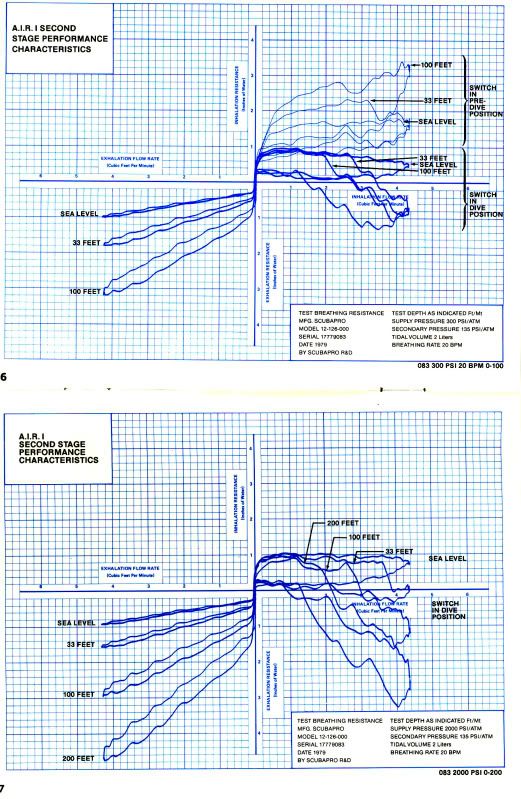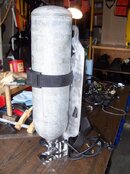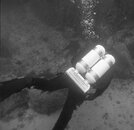I didn’t think it was necessary to post both definitions. The point was that there are two valid definitions with nearly opposite meanings. Isn't “backup” or “reserve” less ambiguous for our purposes and without the negative connotation of redundant? Where did redundant air supply come from anyway?
You are using an out of date browser. It may not display this or other websites correctly.
You should upgrade or use an alternative browser.
You should upgrade or use an alternative browser.
Most Redundant OC SCUBA?
- Thread starter John C. Ratliff
- Start date
Please register or login
Welcome to ScubaBoard, the world's largest scuba diving community. Registration is not required to read the forums, but we encourage you to join. Joining has its benefits and enables you to participate in the discussions.
Benefits of registering include
- Ability to post and comment on topics and discussions.
- A Free photo gallery to share your dive photos with the world.
- You can make this box go away
Elan, no there was no difference in the two cylinders. These are low pressure older steel cylinders. Their service pressure is 1800 psig, and they were rated by U.S. Divers Company an 52 cubic feet. I set the Dacor regulator at 160 psig interstage pressure to very closely match the Scubapro regulator, which is why I used a balanced diaphragm Olympic for that purpose. I started the dives at 1800 psig, and measured both cylinder after the dive at 750 psig. That tells me that both regulators were feeding evenly to the second stage.John on your test dive did you notice that one tank would drain faster than the other due to slight difference in the IPs?
SeaRat
---------- Post added September 23rd, 2013 at 07:07 PM ----------
Akimbo, I have been a product safety guy, and worked in Pararescue where we talked about redundancy a lot with our systems. It is a systems safety engineering term. But I agree, we used "reserve" as a term for our reserve parachute, so either could be used.I didn’t think it was necessary to post both definitions. The point was that there are two valid definitions with nearly opposite meanings. Isn't “backup” or “reserve” less ambiguous for our purposes and without the negative connotation of redundant? Where did redundant air supply come from anyway?
SeaRat
Last edited:
chrpai
Contributor
There's no doubt that other words can be used. But that's not the same as saying redundant can't be used.
John, what's the circular yellow thing next to your fins in the photo.
Redundant and redundancy typify the opposite meanings in the engineering environment I lived in. Redundancy is a backup system where redundant implies performing a function already served by another system and is by implication unnecessary. I never said it should not be used, only that there probably is a better choice of words, especially in an international forum where English isn't everyone's first language.
Back to that circular device...
Redundant and redundancy typify the opposite meanings in the engineering environment I lived in. Redundancy is a backup system where redundant implies performing a function already served by another system and is by implication unnecessary. I never said it should not be used, only that there probably is a better choice of words, especially in an international forum where English isn't everyone's first language.
Back to that circular device...
DaleC
Contributor
Are the polls close yet...
Hope not!
Dale what about the second cam band... or do you consider it redundant?
Attachments
victorzamora
Contributor
Is it wrong to say that I'm horrified by that contraption? The pictures look old, and it must have been great way back when.....but as a modern rig, can we please stay away from all of the unnecessary complications?
- Messages
- 7,659
- Reaction score
- 4,720
- # of dives
- 200 - 499
...//... I set the Dacor regulator at 160 psig interstage pressure to very closely match the Scubapro regulator, which is why I used a balanced diaphragm Olympic for that purpose. I started the dives at 1800 psig, and measured both cylinder after the dive at 750 psig. That tells me that both regulators were feeding evenly to the second stage. ...//...
Interesting information, seems like it should work.
So, If I understand correctly, you've manifolded your primary regulators at the secondary stage through the chamber in your main secondary regulator. Full points for being creative! The only problem that I see is that it sets you up for an unfixable freeflow on your two hose secondary. I'd breathe off of an octo if taking that rig into cold water. The tanks would still drain evenly, no?

Advanced is in terms of delivery of air, and redundancy of systems (there's that word again). Here's the A.I.R. I's performance data:Interesting. How are you defining "advanced" in this context?

Scubapro, in their 1979 publication A.I.R. I AIR INHALATION REGULATOR SECOND STAGE, Addendum to Technical Manual for SCUBAPRO REGULATORS (Cat. 45-101-187), stated:
INSTALLATION
The A.I.R. I Second Stage can be used with almost any first stage regulator available on today's market. In rare situations, a special adaptor may be needed to connect the hose of the A.I.R. I Second Stage to the first stage. Ideally, the output of the first stage should deliver air at 140 psi. Also, best performance will be obtained when the A.I.R. I Second Stage is "fine tuned" by an \authorized technician to match the first stage. Scubapro recommends that the A.I.R. I Second Stage be used in conjunction with any one of the high-performanec Scubapro Balanced "Flow-Through" Pinson First Stages (Mark V, VI, VII, and VIII).
The hose may be connected to either the righ-hand or the left-hand port of the regulator. The unused port must, of course, be capped with the providedh plug. Commercial or advanced divers requiring improved flow perfgormance at depth can connect the A.I.R. I Second Stage to the first stage with two hoses, one over each shoulder. Maximum flow performance and safety can be achieved by attaching the A.I.R. I Second Stage to two independent first stages which, in tern, are mounted on separate high-pressure cylinders.
So this idea actually came from the manufacturer, and from the book SOLO DIVING, The Art of Underwater Self-Sufficiency, Second Edition by Robert Von Maier. Robert brought up the prospect of "independent doubles." He stated:
...Independent doubles are composed of a similar configuration to twins. The primary difference is that instead of the manifold providing a single valve and single regulator seat, it supplies the diver withdual valves and two regulator seats. This provides the diver with two completely independent regulators. By allowing an individual to turn on or off either regulator (independently), it adds an additional margin for safety...
What I have done now is combine these two concepts into one system.
---------- Post added September 23rd, 2013 at 08:50 PM ----------
Thanks, but I would not use this in excessively cold water. I have my Mossback Mk3 double hose regulator for that duty. The A.I.R. I have a unique feature, which is a button which puts about a two-inch water pressure tension on the demand lever, which would stop runaway free flow in all but complete icing situations.Interesting information, seems like it should work.
So, If I understand correctly, you've manifolded your primary regulators at the secondary stage through the chamber in your main secondary regulator. Full points for being creative! The only problem that I see is that it sets you up for an unfixable freeflow on your two hose secondary. I'd breathe off of an octo if taking that rig into cold water. The tanks would still drain evenly, no?

---------- Post added September 23rd, 2013 at 08:52 PM ----------
The Dacor regulator provided my safe second, and I selected it for its balanced diaphragm. I could have used any balanced diaphragm first stage (MR-12, Conshelf, etc.). But the balanced diaphragm is easily adjusted.John do I understand that what is needed is the A.I.R with the left and right hand ports? The dacors are just what you used or are they also a integral part of the setup? I have a A.I.R but no Dacors.
SeaRat
gcarter
Contributor
How do you deal with a second stage failure? The quick response of course is to switch to the alternate, but if both tanks are flowing through the primary second stage could you not have a scenario where you go OOA on both tanks?
Similar threads
- Replies
- 21
- Views
- 3,104
- Replies
- 24
- Views
- 4,454
- Replies
- 13
- Views
- 2,230
- Replies
- 163
- Views
- 21,003





